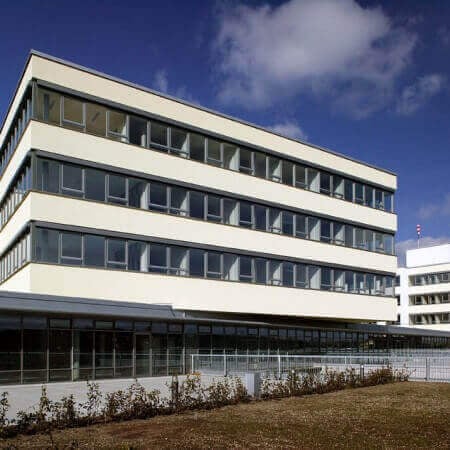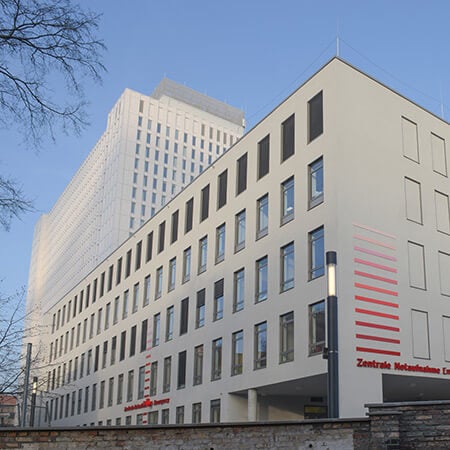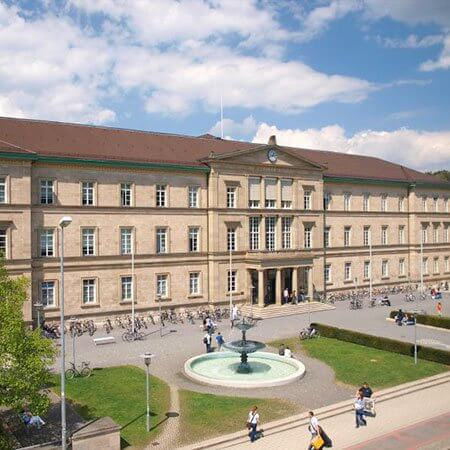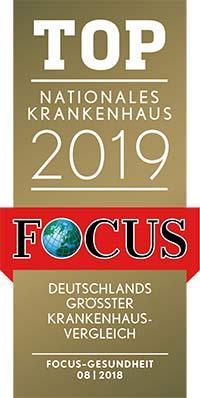Top Hospitals for Treatment of Acute myeloid leukemia
Each hospital in this list meets Booking Health’s strict international standards: at least 250 surgeries per year, ISO‑certified quality management, and documented survival outcomes. Our medical board then ranks the clinics by clinical expertise, technology, and patient‑satisfaction scores.

According to the Focus magazine in 2019, the University Hospital Würzburg ranks among the top national German hospitals! The hospital is one of the oldest medical facilities in Germany. The centuries-old traditions of first-class treatment are combined with the very latest achievements of modern evidence-based medicine and 









Acute Myeloid Leukemia (AML) Diagnosis
Price from:
17115.18
Go to the program Allogeneic bone marrow transplantation in acute myeloid leukemia
Price from:
265264.99
Go to the program Consolidation treatment of acute myeloid leukemia
Price from:
80410.64
Go to the program Radiation therapy of brain at acute myeloid leukemia (AML) with brain damage
Price from:
33192.27
Go to the program Treatment of Acute myeloid leukemia (AML) by high-intensity induction chemotherapy (1 cycle)
Price from:
35721.05
Go to the program Treatment of Acute myeloid leukemia (AML) by high-intensity induction chemotherapy (2 cycles)
Price from:
91365.24
Go to the program Treatment of acute myeloid leukemia (AML) with CAR T-cell therapy
Price from:
542003.41
Go to the program 
According to the reputable Focus magazine, the Charite University Hospital Berlin ranks 1st among the best healthcare facilities in Germany! The hospital is one of the largest and leading university medical complexes in Europe, and also consistently holds leading positions in the international medical arena. The Charite operates









Acute Myeloid Leukemia (AML) Diagnosis
Price from:
16802.82
Go to the program Acute Myeloid Leukemia (AML) Diagnosis
Price from:
16774.11
Go to the program Allogeneic bone marrow transplantation in acute myeloid leukemia
Price from:
265313.23
Go to the program Allogeneic bone marrow transplantation in acute myeloid leukemia
Price from:
265293.7
Go to the program Consolidation treatment of acute myeloid leukemia
Price from:
80726.45
Go to the program Consolidation treatment of acute myeloid leukemia
Price from:
80486.44
Go to the program Radiation therapy of brain at acute myeloid leukemia (AML) with brain damage
Price from:
33643.6
Go to the program Radiation therapy of brain at acute myeloid leukemia (AML) with brain damage
Price from:
33527.6
Go to the program Treatment of Acute myeloid leukemia (AML) by high-intensity induction chemotherapy (1 cycle)
Price from:
35700.38
Go to the program Treatment of Acute myeloid leukemia (AML) by high-intensity induction chemotherapy (1 cycle)
Price from:
35564.87
Go to the program Treatment of Acute myeloid leukemia (AML) by high-intensity induction chemotherapy (2 cycles)
Price from:
91894.64
Go to the program Treatment of Acute myeloid leukemia (AML) by high-intensity induction chemotherapy (2 cycles)
Price from:
91653.48
Go to the program 
According to the prestigious medical publication Focus, the University Hospital Tuebingen ranks among the top five German hospitals! The hospital was founded in 1805, therefore it is proud of its long history, unique experience, and outstanding achievements in the field of medical care, as well as research and teaching activitie









Acute Myeloid Leukemia (AML) Diagnosis
Price from:
19136.37
Go to the program Allogeneic bone marrow transplantation in acute myeloid leukemia
Price from:
310903.55
Go to the program Consolidation treatment of acute myeloid leukemia
Price from:
79713.56
Go to the program Radiation therapy of brain at acute myeloid leukemia (AML) with brain damage
Price from:
37915.65
Go to the program Treatment of Acute myeloid leukemia (AML) by high-intensity induction chemotherapy (1 cycle)
Price from:
40351.4
Go to the program Treatment of Acute myeloid leukemia (AML) by high-intensity induction chemotherapy (2 cycles)
Price from:
105430.84
Go to the program Treatment of acute myeloid leukemia (AML) with CAR T-cell therapy
Price from:
633700.86
Go to the program 

